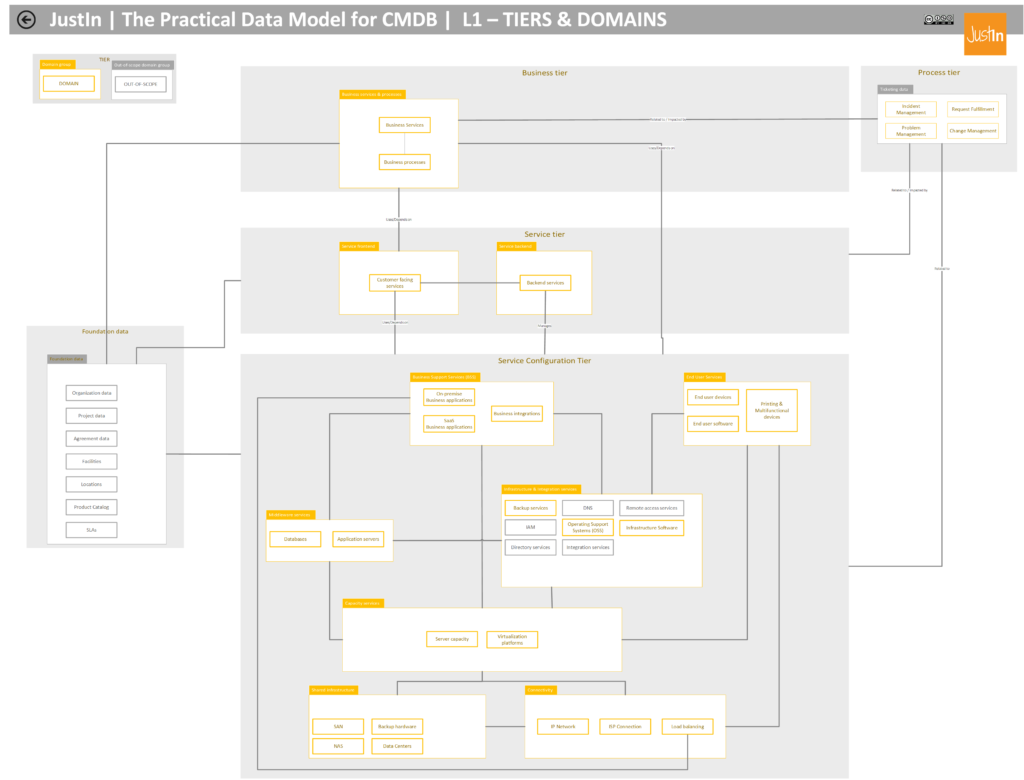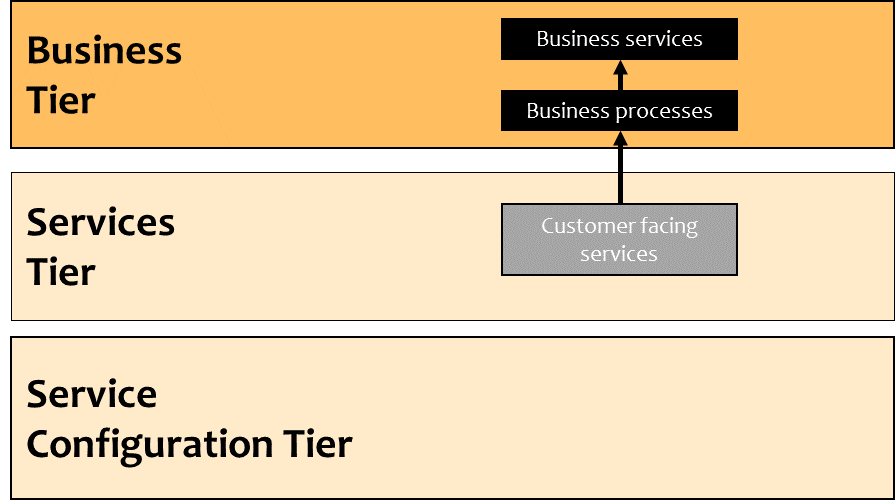The PDMC – Business Tier
The Practical Data Model for CMDB is a common information model for IT service management CMDB solutions created by Justin Group Oy. The Practical Data Model for CMDB will be published in December 2019 under creative commons license which allows actors in the ITSM community to utilize it for different purposes.

This blog series will introduce the three primary tiers of the model.
The Practical Data Model for CMDB – Business Tier [Blog 1/3]
There is no single correct answer to the question which is the right way of modelling service configuration in digital systems such as CMDB. Every service provider organization can have, and should have, their own information models defined. Information models must always be planned to fulfil service provider’s needs & requirements and to enable successful delivery of services. Another contributing factor is the ITSM toolset in use and what are its standard features and default data models.
However, from the service configuration modelling point-of-view, most IT service organizations and the services they provide are relatively similar. Regardless of the geographical location, the size or the business domain service providers are often using similar technologies and have implemented their service management processes based on the same industry best practice frameworks & standards. To keep it short: from the service configuration modelling point-of-view, service provider organizations have quite similar needs.
The Practical Data Model for CMDB model (PDMC) was created based on the creator team’s vision and experience from numerous ITSM process and tool implementation projects. The model is not complete, it does not provide 100% correct answers, but we hope that it will help organizations to make correct questions and to find correct answers for their configuration modelling needs.
The highest tier
Before moving forward with the PDMC model tiers introduction, we need to make sure that we understand certain definitions and their meaning in the same way:
A service provider is either an internal or external organization that delivers services to its customers.
A customer is an individual or organization that purchases or consumes the goods or services of the service provider.
The highest tier of the Practical Data Model for CMDB model is the Business Tier. It contains services & goods produced by the service provider’s customers. The business tier consists of a customer’s business processes and produced business services.

Identifying correct services
There are two types of service providers: Internal and external service providers (ISP & ESP). Internal service providers are internal units in the company, supporting and enabling the company’s business success and competitiveness. External service providers produce services to external customer organizations like a business. Therefore, before we can identify correct services for the business tier, we must first identify organization’s role as a service provider:
Your organization is an internal service provider – Use Business tier for describing the business processes and services of your internal customers (business units).
Your organization is an external service provider – Use Business tier for describing the business processes and services of your external customers.
Dependencies
Configuration Item (CI) dependencies in the Business tier are defined as relationships. As with any other area of the CMDB, it is very rare that the Business tier CIs would have no relationships.

Production of the business services lies in the business processes. In other words, business services are dependent on business processes. The same way the business processes are dependent on the customer-facing services on the services tier. In addition, objects quite often have references to Foundation Data objects, such as individual persons, organizational units or locations. By understanding and maintaining these dependencies in the CMDB, we can use them for different communication, analysis and reporting purposes. Typical use cases for relationship data are business impact analysis for change management, root cause analysis for major incident management and cost distribution and aggregation calculations.
In the next blog…
The next time, I will introduce how to identify and use customer-facing service and backend service CI classes on the services tier.
The Practical Data Model for CMDB will be published in December 2019. It will be available as a free download and includes pre-defined CI class diagrams for all three primary tiers and domains.
More information: www.justin.fi/PDMC/
Julkaistu 25.11.2019
